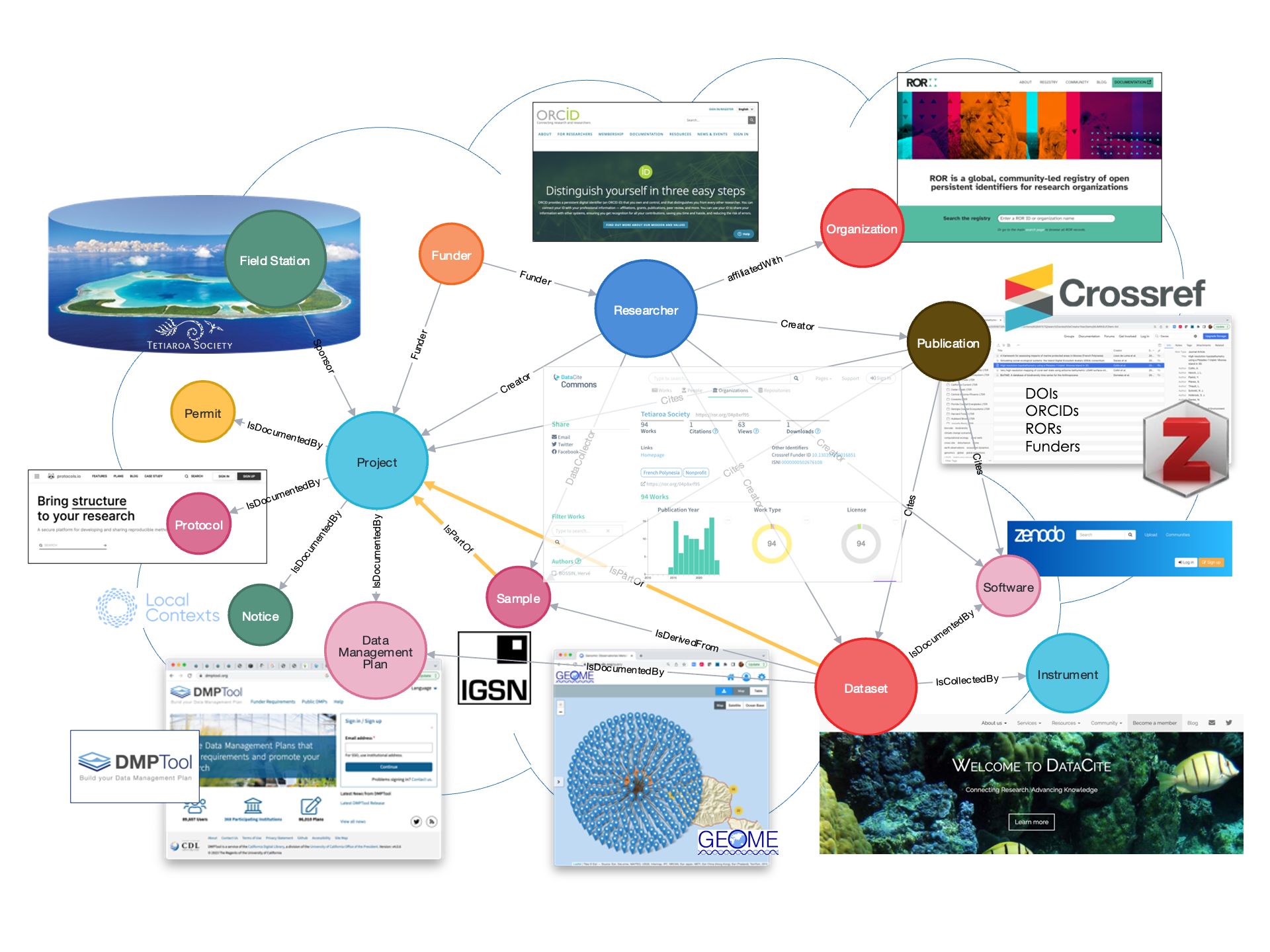2023 Recap
/It is hard to believe that we are closing in on the last few days of 2023. It has been a busy, interesting year for us.
For those following along on my Ph.D. journey, I’m doing it! I finished coursework in May and I passed my preliminary exam in October. All the things I am learning enrich our business and I love that research and our business are intertwined.
Ted has been so productive this year and continues to push the envelope on repository analysis and assessment. In March, he presented a nice summary of his work to a group at NSF.
Our work is bigger than the two of us. We are grateful to our collaborators and colleagues that push us, think with us and have co-created such interesting work - none of this would be possible without our community!
When we reflected on 2023, there were some clear highlights that we wanted to share.
Metadata Game Changers advocates for building on existing infrastructure. We specifically are interested in the ways that DataCite can be extended and leveraged for instruments, samples, projects, and other resource types. We are looking forward to continuing to work with communities like RDA, IGSN and RAiD in 2024 to both use existing infrastructure and maintain their community identities. We wrote about some initial ideas around forming and supporting communities of practice for projects on Upstream. DataCite made big strides with DataCite Commons this year and we continue to be wow’ed. This example of the Research Output dashboard from the Hakaii Institute gives a glimpse of what’s to come when rich metadata are exposed to users through the Global Research Infrastructure.
Connectivity is key. We practiced using existing infrastructure with project metadata which gave us a place to create connections to people, protocols, works, organizations, funders and facilities like biological field stations. This is not a new concept. Ted did some analysis of DataCite to show how ‘project’ had been used by groups like Center for Open Science since 2013. It was a concept that we found helpful in our work on the FAIR Island Project with field stations, many of which have applications (i.e. projects). We didn’t build any new infrastructure for this implementation. Erin used this as a core concept in a class she designed and taught at the Gump South Pacific Research Station in March. We built on work by Madison Langseth, to update the project metadata with related identifiers when things cite the project like papers, samples or Data Management Plans. From this Ted learned to create some initial graphs to begin to visualize all of these connections. Read about the FAIR Island experiments here. We presented on this at ESIP (poster, session) and AGU (poster) later this year.
Multiple resource types connected i the datacite metadata model.
Ted coined the term, ‘re-curation’ and we ran with it. Repositories that are minting DOIs with DataCite often have richer metadata in their holdings that could be shared without much cost to DataCite. Ted supported groups doing this kind of work and published a paper based on his presentation at RDAP. He also did exciting work with NCAR as they used ORCIDs across their organization. One re-curation highlight happened in our ESIP Summer Session, when Bob Dattore from NCAR, did a live demo where he added a new ORCID through the NCAR portal and then pushed the changes to DataCite and we saw the DataCite metadata immediately update! (You can see this moment from the session recording around 39:44). We were both delighted when the term was used independently at AGU by Jenna Everard in their excellent talk on both physical and digital re-curation that they did for the San Andreas Fault Observatory at Depth (SAFOD) Core!
Informating: Making the invisible visible. The term informate was introduced during 1988 by Shoshana Zuboff in her book In the Age of the Smart Machine. It is defined as “the process that translates descriptions and measurements of activities, events and objects into information. By doing so, these activities become visible to the organization.” Building on existing infrastructure and enriching the Global Research Infrastructure through re-curation we understand the repository landscape in new way.
INFORMATE Project schematic
Ted received a new NSF award entitled, ‘INFORMATE: Improving networks for organizational repositories through metadata augmentation, transformation and evolution,’ this year in collaboration with Jamaica Jones and the team at CHORUS. The overall goal of this project is to understand and characterize CHORUS’ capability to make the vast and growing global research infrastructure visible and to help facilitate use of that powerful information resource for the entire research community. Where Are the Data? is the first in a series of discussions emerging from that project.
The sad: This year we lost our good friend and long-time collaborator, Jeff de La Beaujardière, to ALS in November. Jeff was a unique combination of wickedly smart, funny and kind. He loved his family and his friends and taught us about living life to the fullest. Ted met with Jeff at GLOBE during the late 1990s and they continued to work together at NOAA when Jeff moved from NASA to NOAA in 2008 and ski together after Jeff moved to Colorado. Erin worked closely with Jeff in her role at ESIP, where Jeff was the program officer that supported ESIP funding from NOAA. Erin led the development of the remembrance slides for the AGU Informatics Town Hall a few weeks ago where Jeff was the past-president. We’d spent an afternoon with Jeff in September. There was some comfort to have had that final memory.
We are looking forward to 2024 and continuing to work with the Global Research Infrastructure.
Stay Curious -
Erin & Ted



